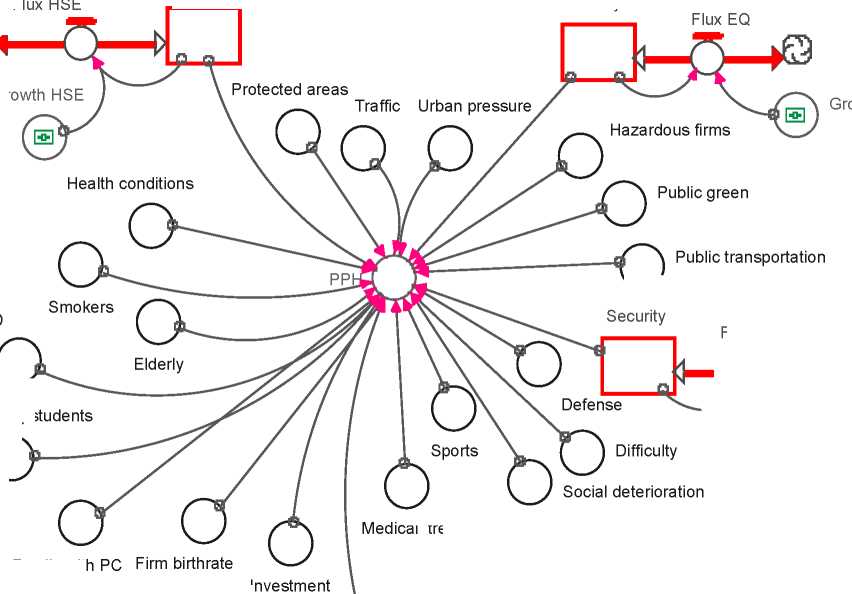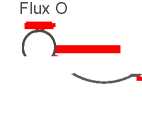3. Physical and Psychological Health and the CFM: an insight
The CFM is based on three functionings: Physical and Psychological Health (PPH),
Education and Training (ET), Social Interactions (SI). In this provisional version we analyze in
depth PPH, while we consider the remaining two less thoroughly, just to simulate the whole
model24.
3.1 Physical and Psychological Health
Four commodities turned by a larger number of conversion factors build up the functioning
PPH. In figure 4 the commodities are the stock (rectangular) variables: Health System
Employees, Environmental Quality, Security and Occupation. All the other converter (circle)
variables25 represent the conversion factors.
Figure 4 - Physical and Psychological Health
|
Health System Employees Flux HSE ________ Θ<-q_Γ~ Growth HSE Protected areas (≡7 ∖ oɔ ( Health conditions PP Smokers /'~'∖ > R&D ( Elderly Non repeating students Family with PC Firm birthrate '---' Investment Flux O Growth O |
Environmental Quality Traffic Urban pressure / Growth EQ '“'ч / Hazardous firms ∖ P / >u f ∖ Public green 's⅜Z''^⅛^∙—____f₽l Public transportation HTJς~ V√ Й7 Security <7 ∖ ∖∖∖2≥'^^ ____ Flux S D j∖ X, Defense s------' T Sports V. ( I Difficulty rl∏=√∖ z*K >"∖ O I4JJJ Growth S ( J ∖ J Social deterioration Medical treatments Occupation |





24 See annex I and II.
25 Except for the converter representing the functioning PPH, which has a score-keeping role and whose variation
over time highlights the level of PPH at different points in time.
15
More intriguing information
1. For Whom is MAI? A theoretical Perspective on Multilateral Agreements on Investments2. Business Cycle Dynamics of a New Keynesian Overlapping Generations Model with Progressive Income Taxation
3. The bank lending channel of monetary policy: identification and estimation using Portuguese micro bank data
4. Towards a Mirror System for the Development of Socially-Mediated Skills
5. The English Examining Boards: Their route from independence to government outsourcing agencies
6. Behaviour-based Knowledge Systems: An Epigenetic Path from Behaviour to Knowledge
7. Intertemporal Risk Management Decisions of Farmers under Preference, Market, and Policy Dynamics
8. THE RISE OF RURAL-TO-RURAL LABOR MARKETS IN CHINA
9. Initial Public Offerings and Venture Capital in Germany
10. Update to a program for saving a model fit as a dataset